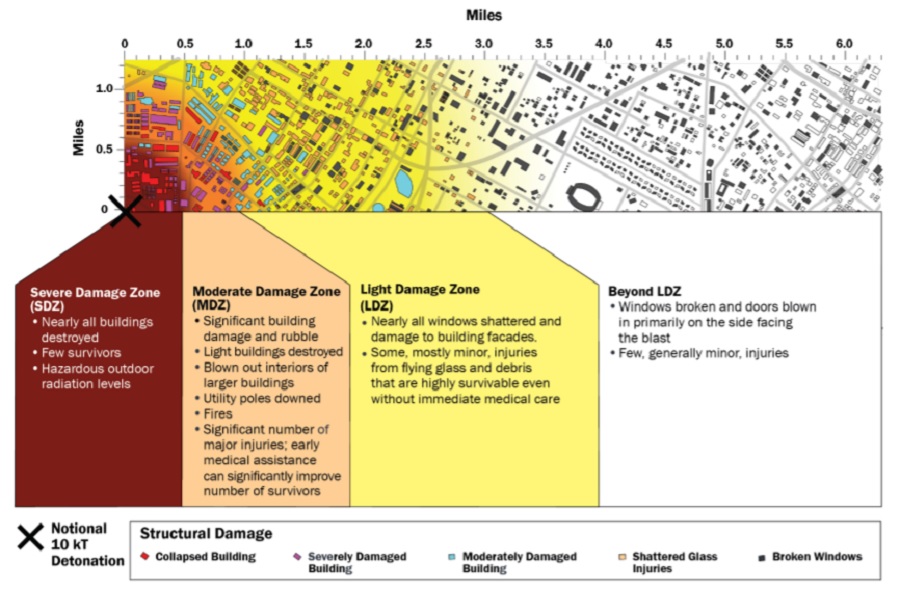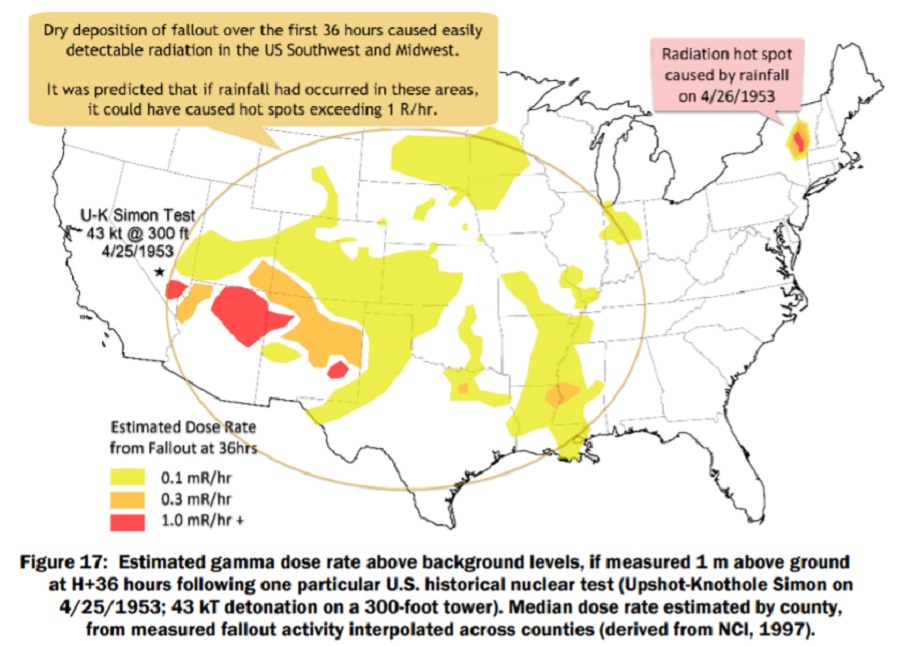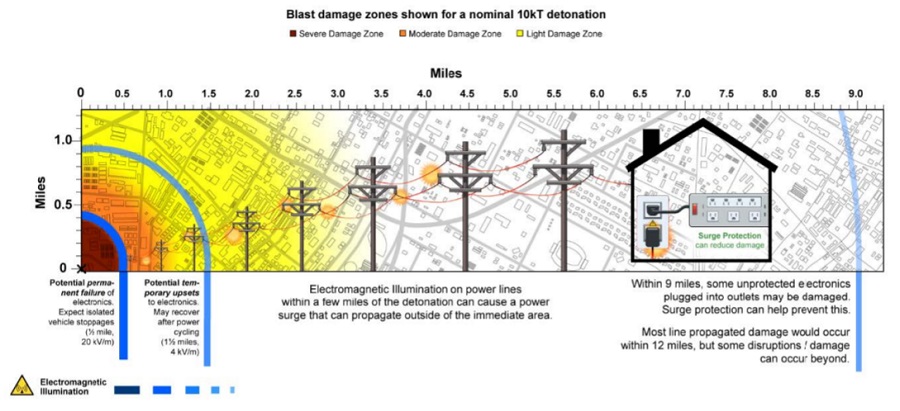
The Federal Emergency Management Agency (FEMA) is hosting a webinar on Thursday afternoon that will ultimately help prepare people for a nuclear detonation. FEMA is holding webinars to gather feedback on the latest “Planning Guidance for Response to Nuclear Detonation”, a 241 page guide drafted in December.
The guidance was developed by a federal interagency committee led by FEMA’s Chemical, Biological, Radiological, and Nuclear (CBRN) office with representatives from the Departments of Energy (DOE), Health and Human Services, Homeland Security, Defense Department, and the Environmental Protection Agency (EPA.)
This latest draft document has been updated and expanded to provide guidance for a wider range of nuclear detonations, including larger detonations and air bursts. It also includes information on the Integrated Public Alert & Warning System (IPAWS) which enables local officials to send warnings and key messages during the response.
This updated guidance also reflects evolving nuclear threats facing the country, including “nation-state threats with much larger explosive yields.” Guidance also considers nuclear devices delivered by ballistic missile or aircraft which can deliver detonations elevated in the air. According to FEMA, “air bursts can increase the scale of the blast and thermal damage inflicted and may also significantly reduce the fallout produced.”

When a nuclear detonation occurs, it may take more than a day for the federal government to respond. The updated guidance provides critical considerations that points out that “no significant federal response will be at the scene for 24 hours and the full extent of federal assets will not be available for several days.” FEMA adds that emergency response to a nuclear detonation is principally a local function and to not expect a significant federal response for at least 24-72 hours.
The comprehensive guide also relies on the experience the United States has detonating nuclear weapons –including a nuclear bomb it set-off over Nevada in 1953. Named “Simon” in the U.S. military’s nuclear testing program known as “Upshot-Knothole”, a TX-17/24 thermonuclear weapon design which had a yield of 43 kilotons was detonated at the Nevada National Security Site on April 25, 1953. Simon was detonated atop 300 feet tower, developing a giant mushroom cloud over the southwest. Rather than disperse as expected, radioactive material in the mushroom cloud traveled eastward across the United States and was rained down on New York’s capital district in a severe thunderstorm. Other radioactive fallout from the blast fell across wide areas of the southwest and central states.

Beyond blast damage and radiation illness, the FEMA guidance also covers Electromagnetic Pulse (EMP) effects. An electromagnetic pulse (EMP) is a brief burst of electromagnetic energy. Depending upon the source, the origin of an EMP can be natural or artificial, and can occur as an electromagnetic field, as an electric field, as a magnetic field, or as a conducted electric current. The electromagnetic interference caused by an EMP disrupts communications and damages electronic equipment; at higher levels of energy, an EMP can even physically damage objects such as buildings and airplanes.

According to a diagram included in the draft guide, an EMP would create various types of damage over great distances above/beyond what the nuclear blast itself would do. Within a 1/2 mile range, there’d be a permanent failure of electronics including isolated vehicle stoppages. Induced voltages traveling across power lines could also bring damage far away from the initial blast site. According to the FEMA guidance, within 9 miles, some unprotected electronics plugged into outlets could be damaged by this surge. “Most line propagated damage would occur within 12 miles, but some disruptions / damage can occur beyond,” says the guide.
The guide, which can be found in its entirety here, will be reviewed in a half-hour long Zoom webinar FEMA is hosting at 2pm ET Thursday afternoon. The webinar is designed for a primary audience that includes emergency planners such as fire response, EMTs, HAZMAT response personnel, mass care providers, those involved with public works and/or utilities, public health, and transportation, and “other organizations that represent disciplines that conduct emergency response activities.” Participants will be encouraged to provide feedback to call-out any changes or updates that the guide should feature when it’s officially rolled out. Information about attending the webinar can be found on FEMA’s website here.
When the guide is finalized, it’ll be used in formal training exercises around the U.S. to keep it prepared for any nuclear detonation that could occur in the future.